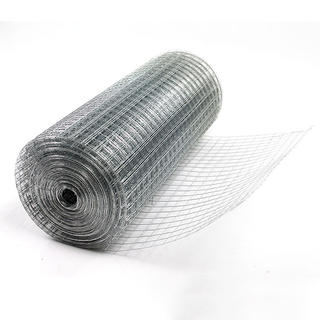Welded Wire Mesh is a versatile grid-like material formed by welding intersecting steel wires at precise right angles. Manufactured through automated resistance welding processes, it creates uniform panels with consistent strength and dimensional stability. The mesh comes in various wire diameters, spacing configurations, and opening sizes to accommodate different load-bearing requirements and applications.
Widely used in construction, welded wire mesh reinforces concrete structures like slabs, walls, and pavements to prevent cracking and improve tensile strength. Its prefabricated nature allows for faster installation compared to traditional rebar, reducing labor costs while maintaining structural integrity. Beyond construction, it serves industrial purposes as machine guards, partitions, and shelving, as well as agricultural uses including animal enclosures and crop protection.
The material can be fabricated from plain, galvanized, or stainless steel wires to suit environmental conditions, with galvanized and PVC-coated variants offering enhanced corrosion resistance for outdoor applications. Its balanced combination of strength, flexibility, and cost-effectiveness makes welded wire mesh a fundamental material across multiple sectors, from infrastructure projects to security fencing and architectural design. The mesh's adaptability allows for custom fabrication to meet specialized engineering and design specifications.
What are the benefits of welded wire mesh?
Welded wire mesh offers numerous advantages, making it a popular choice across various industries. Its primary benefit is structural strength—the welded intersections create a rigid grid that resists bending or deformation under pressure, ideal for concrete reinforcement and industrial flooring. The uniform grid pattern ensures consistent performance, whether used in construction, agriculture, or security. It is easy to install, often coming in prefabricated panels that save time and labor costs. The material is versatile, available in different gauges, coatings (like galvanized or PVC), and opening sizes to suit specific needs. Additionally, welded mesh provides excellent visibility and airflow, making it perfect for fencing, animal enclosures, and partitions where transparency is desired. Its durability ensures long-term use with minimal maintenance, even in harsh environments. From reinforcing roads to protecting gardens, welded wire mesh combines functionality, cost-effectiveness, and adaptability for diverse applications.
Is welded wire mesh fencing suitable for keeping coyotes out?
Welded wire mesh fencing can effectively deter coyotes if designed with the right specifications. To prevent coyotes from digging under or jumping over, the fence should have small openings (4 inches or less) and a minimum height of 5-6 feet. Burying the mesh at least 12 inches underground or adding an outward-facing apron prevents digging breaches. Heavy-gauge wire (10-12 gauge) ensures the fence withstands attempts to chew or force through. While welded mesh provides a sturdy barrier, combining it with an electric wire at the top or bottom enhances deterrence. However, in high-risk areas, woven wire mesh with tighter spacing or specialized predator fencing may offer superior security. Proper installation and regular maintenance are key to ensuring welded wire mesh remains an effective coyote deterrent.
What is the difference between woven and welded wire mesh?
The key difference between woven and welded wire mesh lies in their manufacturing and structural properties. Welded mesh is made by electrically fusing steel wires at their intersections, creating a rigid, uniform grid with high strength and stability—ideal for concrete reinforcement, fencing, and industrial uses. Woven mesh, however, is produced by interlocking wires in a loom-like process, resulting in a flexible fabric suitable for filtering, screening, and lightweight barriers. Welded mesh maintains its shape under pressure, while woven mesh can bend and adapt to uneven surfaces. Woven mesh often has smaller, more varied openings for specialized applications like insect screens or animal cages, whereas welded mesh offers larger, consistent openings for structural projects. The choice depends on the need for rigidity (welded) versus flexibility (woven).


